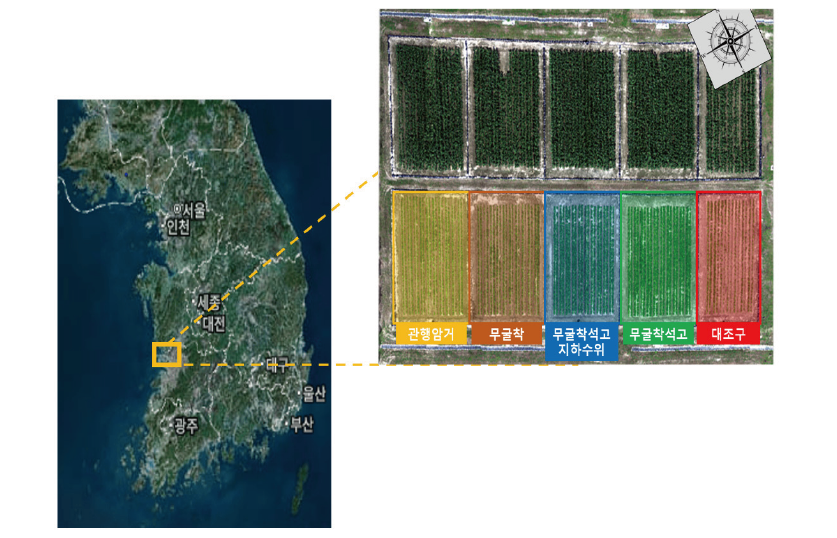Abstract
This study was conducted to distinguish the growth inhibition caused by salinity stress in soybeans in reclaimed land and to predict the growth using hyperspectral and multispectral imagery. When classified into normal growth and growth inhibition groups using each growth (fresh weight, height and leaf area), hyperspectral and multispectral data of soybean by k-means, it is matched with 100% in hyperspectral and 90% in multispectral based on classification result (reference) by using growth data. Considering development of a multispectral sensor for predicting the growth of soybeans, the hyperspectral data of full width at half maximum (FWHM) 5 nm were merged to FWHM 10, 25 and 50 nm based on commercially available band pass filters, and PLSR models for each FWHM were developed. The model’s performances were evaluated by coefficient of determination (R2), root mean squares error (RMSE) and relative error (RE). As a result, the performances were R2≥0.72 and RE≤30.9% regardless of FWHM in the models for predicting each growth data (fresh weight, height and leaf area). It presents the possibility of developing a general-purpose multispectral sensor for predicting the growth of not only soybean but also various crops. When a commercially available multispectral sensor was used, its performance did not deviate significantly from the hyperspectral result. Therefore, it presents that the sensor can also be used to predict growth. The results of this study will contribute to stabilizing the cultivation of crops threatened by salinity stress.
Figures & Tables

Fig. 1.Location in Study Field.


